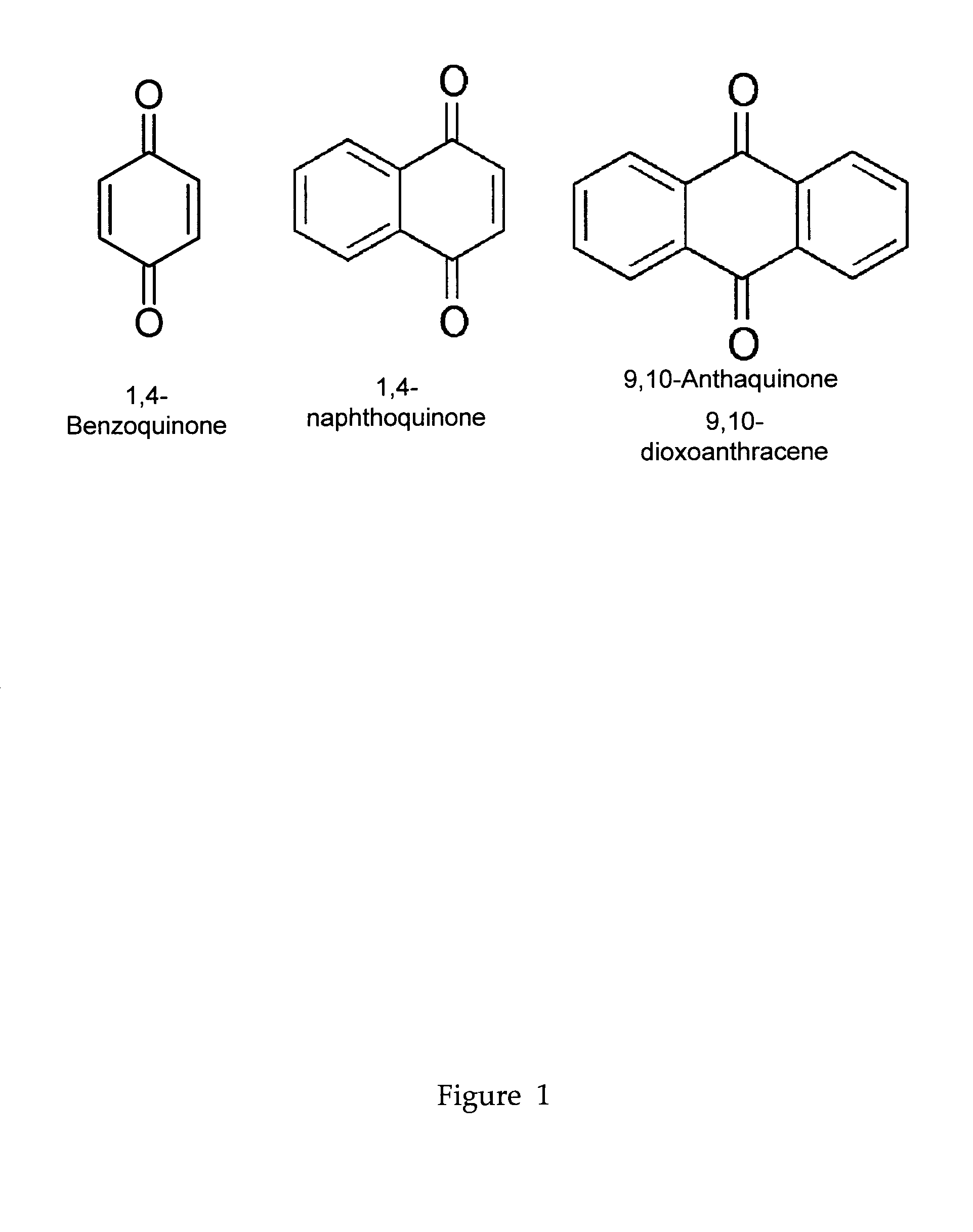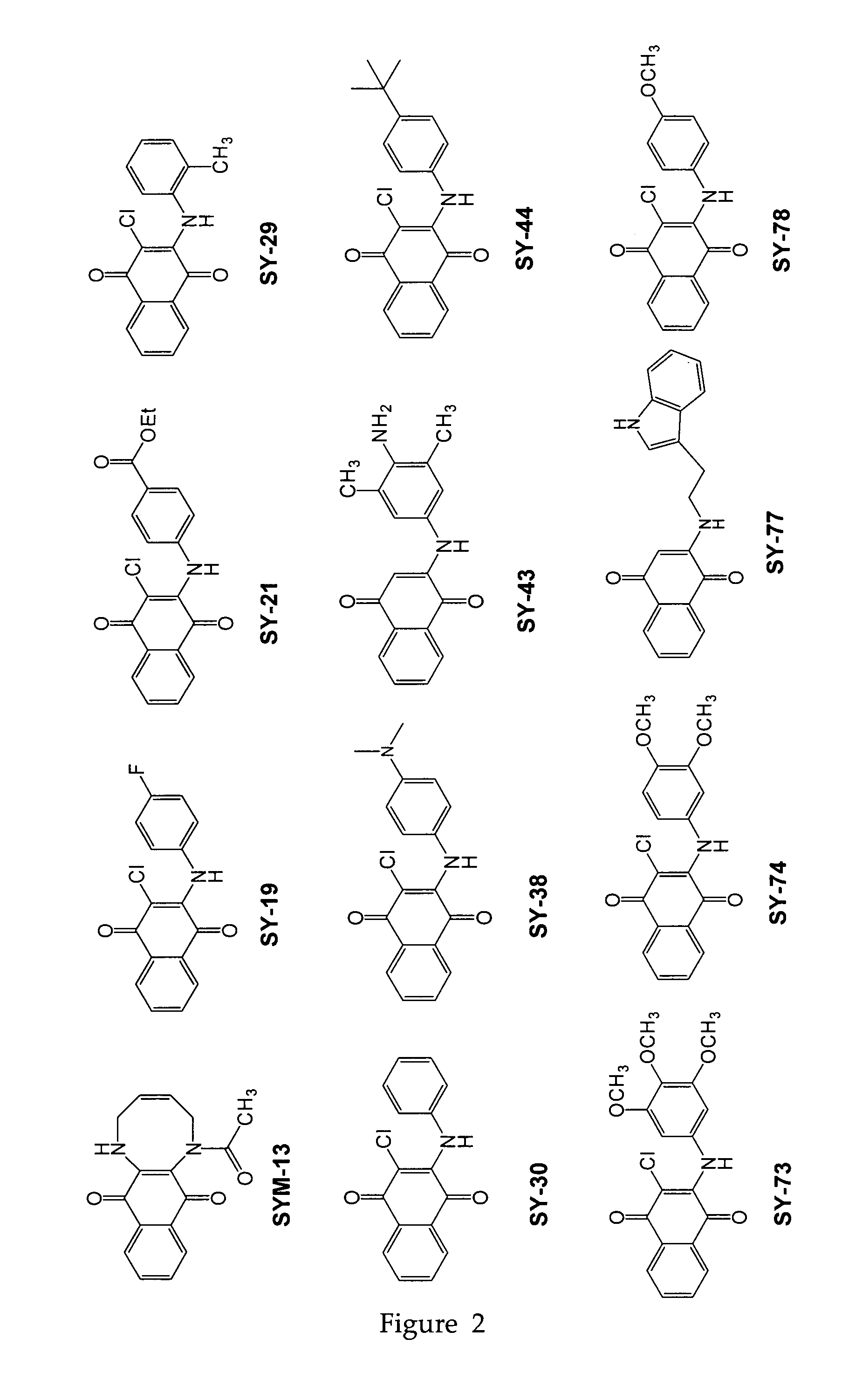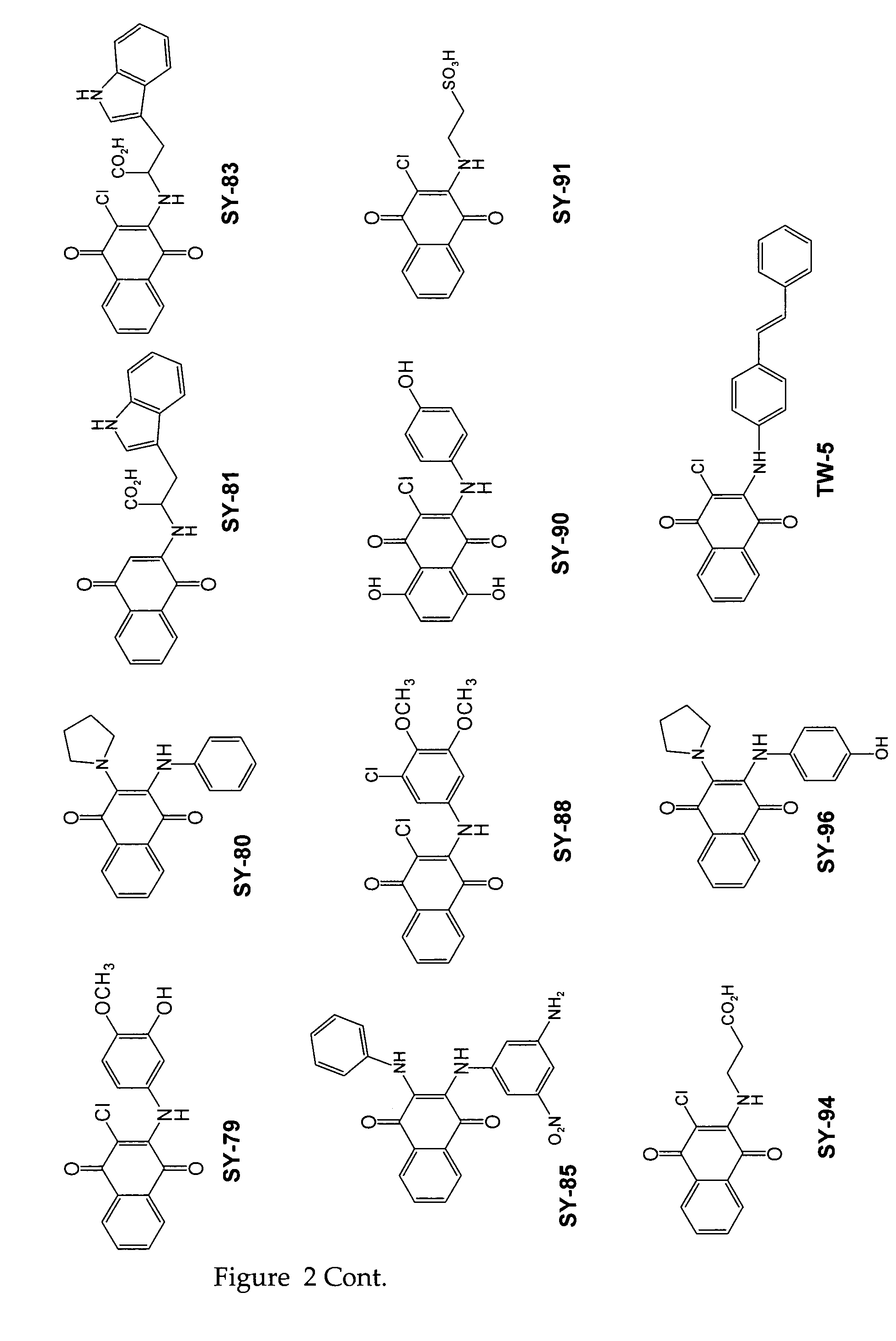Naphthoquinone derivatives useful for prevention of amyloid deposits and treatment of diseases involving amyloidogenesis
a naphthoquinone and amyloidogenesis technology, which is applied in the direction of biocide, plant growth regulator, animal husbandry, etc., can solve the problems that the molecular mechanism underlying the misfolding and assembly of amyloid proteins is not fully understood, and achieves good bioavailability, low toxicity, and adequate penetration
- Summary
- Abstract
- Description
- Claims
- Application Information
AI Technical Summary
Benefits of technology
Problems solved by technology
Method used
Image
Examples
example 1
Assessing Inhibition of Oligomer Formation
In Vitro Assays
[0092]Twenty three substituted naphthoquinones (FIG. 2 and Table 1) were synthesized and analyzed for possible inhibition of formation of SDS-soluble oligomers from Aβ monomers in solution using the assay described in Barghorn (Ibid). Several substituted naphthoquinones showed notable inhibition towards formation of Aβ oligomers. Concentration dependent inhibition of Aβ oligomers was observed for several naphthoquinones screened, and the strongest inhibition was seen using two tryptophan substituted naphthoquinones, SY-81 and SY-83 (FIG. 5). The effect both SY-81 and SY-83 on the ability of early non-toxic intermediate oligomers (˜18 kDa) to further grow into the larger oligomer assemblies (˜56 kDa) known to be toxic is clearly evident Inhibition was seen at ratios as low as 5:1 (Aβ1-42: quinone compound).
[0093]
TABLE 1Representative quinone derivativesCompound name(Formula No.)R2R3R4SY-77 (XIII)HHSY-96 (XXI)HSY-90 (XXI)ClHSY-8...
example 2
Affinity of Inhibitors to Aβ
[0095]The affinity of SY-83 and SY-81 towards the Aβ was demonstrated using fluorescence anisotropy experiments, taking advantage of the intrinsic fluorescence of the two Trp-substituted quinones and their relatively small size as compared to the Aβ oligomers. Increasing amounts of Aβ were titrated into a solution of SY-83 or SY-81 and the anisotropy was determined (FIG. 4). The affinity of SY-83 and SY-81 was found to be about 900 nM and 90 nM, respectively.
example 3
Inhibition of Aβ Fibril Formation
[0096]Though there is a growing recognition that the early Aβ oligomer intermediates and not the fibrils are the most toxic amyloid forms in AD, this debate has not been completely resolved. To discern whether Trp-substituted quinones also inhibit the formation of mature β-amyloid fibrils, the Thioflavin-T (ThT) binding assay was applied. This method provides quantitative information on amyloid fibrils growth. β-amyloid was allowed to form amyloid fibrils either in the presence of different concentrations of SY-83 (FIG. 5A, C) or SY-81 (FIG. 5 B, D) or with no inhibitor (WT). The fibrillization process was followed for several days until a plateau state was reached. Fluorescence values were measured throughout. The formation of amyloid fibrils was significantly lowered in the presence of the inhibitors, even at very low concentrations such as 1.25 μM, as observed by fluorescence intensity. These results clearly indicate that SY-81 and SY-83 have high...
PUM
| Property | Measurement | Unit |
|---|---|---|
| diameter | aaaaa | aaaaa |
| thick | aaaaa | aaaaa |
| thick | aaaaa | aaaaa |
Abstract
Description
Claims
Application Information
 Login to View More
Login to View More - R&D
- Intellectual Property
- Life Sciences
- Materials
- Tech Scout
- Unparalleled Data Quality
- Higher Quality Content
- 60% Fewer Hallucinations
Browse by: Latest US Patents, China's latest patents, Technical Efficacy Thesaurus, Application Domain, Technology Topic, Popular Technical Reports.
© 2025 PatSnap. All rights reserved.Legal|Privacy policy|Modern Slavery Act Transparency Statement|Sitemap|About US| Contact US: help@patsnap.com



